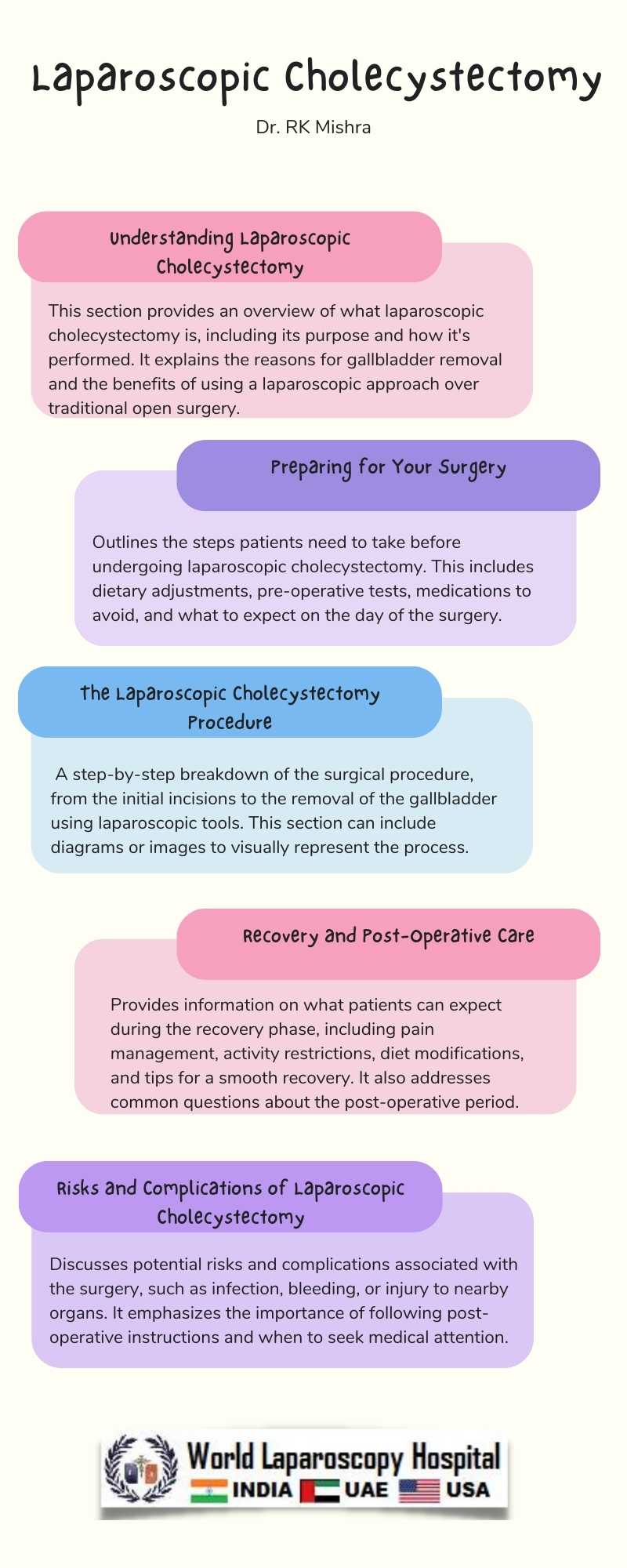Laparoscopic Cholecystectomy: Techniques and Recovery
Laparoscopic cholecystectomy, a minimally invasive surgical procedure to remove the gallbladder, has revolutionized gallbladder surgeries since its introduction. This procedure has become the gold standard for treating gallbladder diseases, such as gallstones and cholecystitis, primarily due to its reduced recovery time and lower risk of complications compared to open surgery.

Historical Context and Development
The journey of laparoscopic cholecystectomy began in the late 1980s, marking a pivotal shift from traditional open surgeries. The minimally invasive nature of this technique brought significant benefits, including smaller incisions, reduced pain, and quicker recovery, which led to its rapid adoption worldwide.
Preoperative Considerations
Before undergoing a laparoscopic cholecystectomy, patients undergo a thorough evaluation. This includes medical history, physical examination, and diagnostic tests like ultrasound or MRI to assess the gallbladder's condition. Preoperative preparation also involves patient education about the procedure, risks, and postoperative care.
Surgical Technique
Laparoscopic cholecystectomy is performed under general anesthesia. The surgeon makes several small incisions in the abdomen to insert a laparoscope (a thin tube with a camera) and surgical instruments. The abdomen is inflated with carbon dioxide to provide a clear view and space for the procedure. The gallbladder is then carefully dissected and removed through one of the incisions.
Key steps of the procedure include:
- Identifying the cystic duct and artery
- Clipping and cutting these structures
- Dissecting the gallbladder from the liver bed
- Extracting the gallbladder
Intraoperative cholangiography may be performed to identify stones in the bile duct or to clarify the anatomy.
Advances and Variations
The technique has evolved with advances in surgical tools and imaging technology. Variations like single-incision laparoscopic surgery and robotic-assisted laparoscopic cholecystectomy are gaining popularity, offering benefits like reduced scarring and enhanced precision.
Postoperative Recovery and Care
Recovery from laparoscopic cholecystectomy is generally quicker compared to open surgery. Patients often go home the same day or the following day and can resume normal activities within a week. Pain management, wound care, and gradual return to normal diet are crucial aspects of postoperative care.
Potential Complications
While laparoscopic cholecystectomy is relatively safe, it carries potential risks like bile duct injury, bleeding, and infection. Early detection and management of these complications are vital for a successful outcome.
Long-Term Outcomes
Most patients experience significant relief from symptoms post-surgery. The long-term prognosis is excellent, with a low incidence of complications or need for further surgery.
Conclusion
Laparoscopic cholecystectomy represents a significant advance in surgical treatment for gallbladder diseases. Its minimally invasive approach leads to better patient outcomes, fewer complications, and quicker recovery. As surgical techniques and technology continue to evolve, laparoscopic cholecystectomy remains a cornerstone in the field of minimally invasive surgery, offering patients a safe and effective treatment option.

Historical Context and Development
The journey of laparoscopic cholecystectomy began in the late 1980s, marking a pivotal shift from traditional open surgeries. The minimally invasive nature of this technique brought significant benefits, including smaller incisions, reduced pain, and quicker recovery, which led to its rapid adoption worldwide.
Preoperative Considerations
Before undergoing a laparoscopic cholecystectomy, patients undergo a thorough evaluation. This includes medical history, physical examination, and diagnostic tests like ultrasound or MRI to assess the gallbladder's condition. Preoperative preparation also involves patient education about the procedure, risks, and postoperative care.
Surgical Technique
Laparoscopic cholecystectomy is performed under general anesthesia. The surgeon makes several small incisions in the abdomen to insert a laparoscope (a thin tube with a camera) and surgical instruments. The abdomen is inflated with carbon dioxide to provide a clear view and space for the procedure. The gallbladder is then carefully dissected and removed through one of the incisions.
Key steps of the procedure include:
- Identifying the cystic duct and artery
- Clipping and cutting these structures
- Dissecting the gallbladder from the liver bed
- Extracting the gallbladder
Intraoperative cholangiography may be performed to identify stones in the bile duct or to clarify the anatomy.
Advances and Variations
The technique has evolved with advances in surgical tools and imaging technology. Variations like single-incision laparoscopic surgery and robotic-assisted laparoscopic cholecystectomy are gaining popularity, offering benefits like reduced scarring and enhanced precision.
Postoperative Recovery and Care
Recovery from laparoscopic cholecystectomy is generally quicker compared to open surgery. Patients often go home the same day or the following day and can resume normal activities within a week. Pain management, wound care, and gradual return to normal diet are crucial aspects of postoperative care.
Potential Complications
While laparoscopic cholecystectomy is relatively safe, it carries potential risks like bile duct injury, bleeding, and infection. Early detection and management of these complications are vital for a successful outcome.
Long-Term Outcomes
Most patients experience significant relief from symptoms post-surgery. The long-term prognosis is excellent, with a low incidence of complications or need for further surgery.
Conclusion
Laparoscopic cholecystectomy represents a significant advance in surgical treatment for gallbladder diseases. Its minimally invasive approach leads to better patient outcomes, fewer complications, and quicker recovery. As surgical techniques and technology continue to evolve, laparoscopic cholecystectomy remains a cornerstone in the field of minimally invasive surgery, offering patients a safe and effective treatment option.
2 COMMENTS
Dr. K Awasthi
#1
Dec 25th, 2023 6:59 pm
Laparoscopic cholecystectomy is a transformative breakthrough in gallbladder surgery, ensuring superior patient outcomes, reduced complications, and swift recovery. Its enduring significance as a cornerstone in minimally invasive surgery underscores its safety and efficacy.
Dr. Rajeev Tiwari
#2
Jan 4th, 2024 7:43 am
Laparoscopic cholecystectomy marks a significant advancement in gallbladder disease treatment. Its minimally invasive approach ensures better outcomes, fewer complications, and quicker recovery. As techniques and technology evolve, laparoscopic cholecystectomy remains a cornerstone, offering a safe and effective treatment option.
| Older Post | Home | Newer Post |

